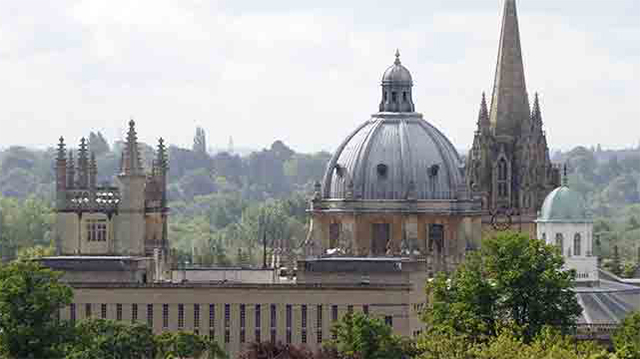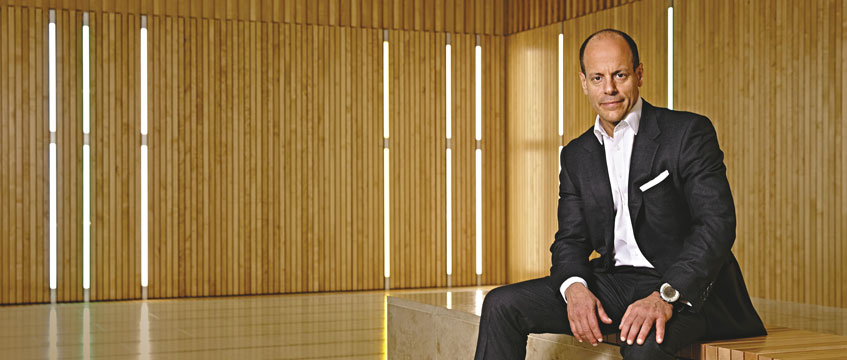by Chris Jones
In recent months, the much-publicised purchases of well-known landmark buildings by overseas interests have once again focused attention on the foreign ownership of UK property, particularly in the City. In turn, this has given rise to speculation on the likely impact that further increased activity from abroad may have on the market in general.
Over the course of the last 12 months, we have seen many more City office buildings purchased by overseas interests than at any other time in the past.
As the boundaries of the City itself have expanded geographically to cope with the ever-growing influx of overseas occupiers, particularly from within the financial sector, so has the spread of overseas investors keen to employ their assets to produce certain income and steady capital growth from the ownership of City property.
There have been three transactions in particular which served to heighten market awareness of the financial muscle that can be brought to bear from overseas.
The sale of Bracken House, currently the headquarters of the Financial Times in Cannon Street, EC4, by the Pearson Group to the Japanese developer contractors, Ohbayashi for the massive price of £143m stunned City observers. More recently the sale of the 320,000-sq ft Adelphi building in Strand by owner-occupiers Manufacturers Hanover Trust to Middle Eastern investors for close to £200m, MHT having paid £95m for the property only a little over two years ago, and, third, the sale last month by Mountleigh of the sensitive Paternoster Square site to the virtually unknown Venezuelan company, Organisacion Diego Cisneros, for the price of £317.5m (which included four other central London properties).
The level of interest shown in these deals is not only due to the fact that the buildings were purchased by overseas interests but also to the sheer size of the capital expenditure involved in each single investment.
Although it is clear that the level of market activity from overseas has increased dramatically over the last few years, the foreign purchaser is far from being a new phenomenon in the City. Previously there have been a number of significant owner-occupier purchases principally by foreign banks such as the Moscow Narodny Bank at 81 King William Street, EC4, Swiss Banking Corporation at 99 Gresham Street, EC2, Credit Lyonnais at 84-94 Queen Victoria Street, the Mitsubishi Bank’s purchase of Atlas House, Cheapside, EC2, and this year the “100m sale of phase five of Broadgate to Bankers Trust.
However, prior to the last three years there were very few sales to foreign developers or investors with the notable exception of the Kuwait-backed St Martins Property Corporation. Their long-term ownership and redevelopment of substantial land holdings such as London Bridge City and the proposed redevelopment of their aptly named St Martin’s-le-Grand site will have contributed significantly to the improvement of those areas.
Over the course of the last three years both the nature of the overseas purchasers and their objectives have changed.
While not directly impacting on the City office market, the takeovers of two established UK property companies, Haslemere Estates and Peachey Properties by Dutch institutions Rodamco and Wereldhave respectively, signalled the arrival of foreign investors perhaps wishing to utilise their financial strength to purchase local knowledge and expertise.
During the same period we saw the arrival of the Japanese developer-contractor on the City scene. Initially a number of the leading companies have teamed up with UK partners and carried out successful schemes such as the joint redevelopment of the former Post Office headquarters, again at St Martin’s-le-Grand, EC1, by Kumagai Gumi in conjunction with Glengate Properties to provide a 400,000-sq ft office building behind the retained facade, subsequently sold to leading Japanese securities company Nomura for occupation as their new City headquarters. Another notable current partnership is that between Hammerson and Taisei Corporation formed to redevelop River Plate House in Finsbury Circus, EC2, to provide approximately 150,000 sq ft of air-conditioned offices prelet to Fuji Bank, represented by De Groot Collis.
There are also two developments involving Guardian Royal Exchange and C Itoh, who will be carrying out schemes on Aitkin House, Fleet Street, EC4, purchased this year from a Norwegian consortium for £21.5m and a 50,000-sq ft office development at 2-6 Austin Friars, EC2.
Apart from the aforementioned joint ventures, Kumagai Gumi, Shimizu Corporation and Takenaka are all involved in development projects in their own right, the most noticeably active being Kumagai Gumi with their current projects including the development of a 220,000-sq ft office building on the Whitefriars site off Fleet Street, EC4, thought to be prelet to solicitors Freshfields at close to £40 per sq ft; the redevelopment of Vintry car park to provide 180,000 sq ft of offices, purchased last year from Eagle Star Properties; and a proposed scheme of 200,000 sq ft in Bishopsgate where a planning consent is currently awaited. It can reasonably be assumed that the level of activity from these Japanese developer-contractors will continue to increase as they become more confident, providing a real challenge for the principal UK developers such as Rosehaugh and Speyhawk when it comes to competing for the right to develop major office sites in central London.
On the eastern fringe of the City other overseas developers are also undertaking schemes at the present time. Trinity, Tower, a joint company formed by Swedish construction company Skanska International and Danish developers Windborne, are carrying out the construction of a 480,000-sq ft office complex together with retail and sports facilities on the Thomas More Street site immediately to the east of the Royal Mint. Another major Danish developer, Kay Wilhelmsen Oversea a/s, is redeveloping a site at 10-12 Alie Street, E1, to provide 20,000 sq ft of air-conditioned offices scheduled for completion next summer. De Groot Collis advised Kay Wilhelmsen in the acquisition of the site and are letting agents.
Further to the east, North American entrepreneurs the Reichman brothers, through their company Olympia & York, have commenced work on the first phase of the vast 10m-sq ft office complex at Canary Wharf on the Isle of Dogs. They will be hoping to attract some anchor tenants from within the City’s existing financial community. However, with a ready supply of new developments within or adjacent to the established City area and the recent announcement of the more accessible King’s Cross development providing direct competition, this may prove more difficult than they had envisaged.
While Japanese developer-contractors have firmly established their position in the City office market, little has been seen, as yet, of the Japanese investing institutions and, more particularly, the life investment companies. For the time being, these companies seem content to continue their research into the UK property investment market and are not rushing to compete for those opportunities which become available. However, that picture will, I believe, change before very long. At the present time it is understood that a major Japanese life company are about to purchase an interest in a new banking building located in the prime City area prelet to a Far Eastern financial organisation. Once completion of such a deal is announced I think it likely that others will follow in rapid succession.
As mentioned earlier there has been development involvement from both the Dutch and Danish, while on the pure investment front, investors from both of these countries, together with other Scandinavians, have become increasingly active in the City market.
Recent deals involving Danish investors include the sale of 5-10 Bury Street, EC3, a multi-let 30,000-sq ft office building sold by MIM Britannia for £17m, and a Danish teachers’ pension fund buying the 54,000-sq ft office development in Holborn known as Parker Tower, let to British Telecom at £1.95m pa, from London & Paris for about £30m. A Dutch pension fund, Algemeen Burgerlijk Pensionenfonds, have bought Nordic Bank House, 20 St Dunstan’s Hill, EC3, let to Den Norske Creditbank, from St Martins Property Corporation for the sum of £34.5m.
So why have all these overseas companies and funds decided to invest, purchase or develop in the City of London rather than the previously popular USA or some other prominent world centre, despite the relatively low income return on capital invested with yields typically at between 5% and 6.5%?
The answer is relatively simple — the UK has over many hundreds of years evolved the most sophisticated laws of property ownership in the world and based upon a firm legal foundation has developed the “Institutional” lease offering longer term security of income to landlords than in any other country. More importantly, there are no government restrictions on overseas ownership and the City itself has a respected and recognised business infrastructure which should always guarantee that this financial centre will be at the forefront of world commerce.
In conclusion, it is clear from the increasingly large number of transactions which are taking place involving overseas companies, whether those are in the nature of development or investment purchases, that competition to acquire City office buildings will continue to increase over the next year, possibly resulting in a fall in yields and a consequent further increase in capital values. Apart from those nationalities already identified, it is known that Australian investors are looking hard at the City office market and, also of greater significance, Japanese investors are yet to make any real impact although this must come shortly.
At a time when office rents in the prime sector of the City are reaching £70 per sq ft, and tenants are still prepared to accept leases for as long as 25 years with full liability for the cost of all repairs and other outgoings — leaving the owner with no more responsibility than to collect the rent — it is hardly surprising that investors world-wide are keen to own some portion of this pre-eminent world financial centre.










